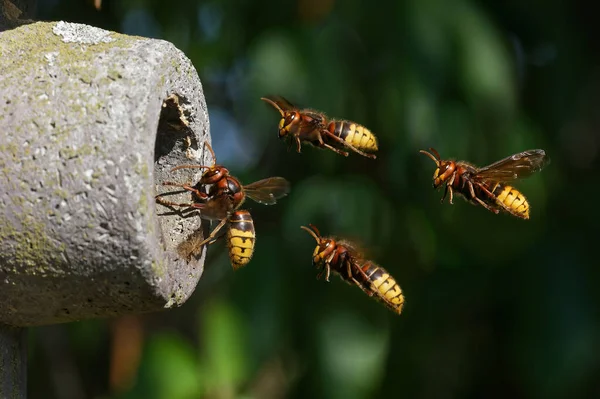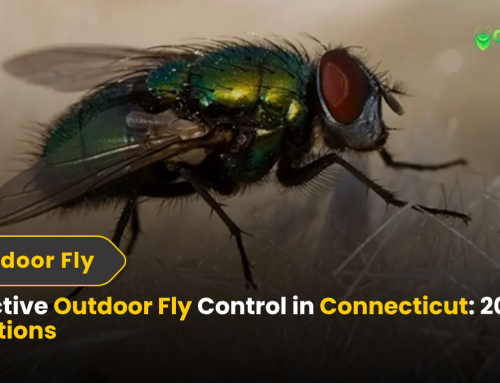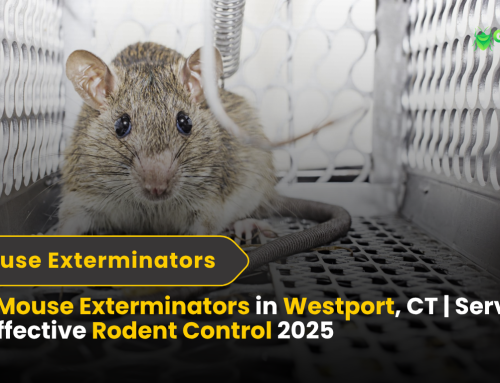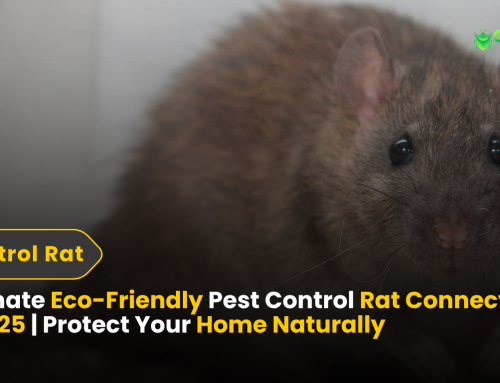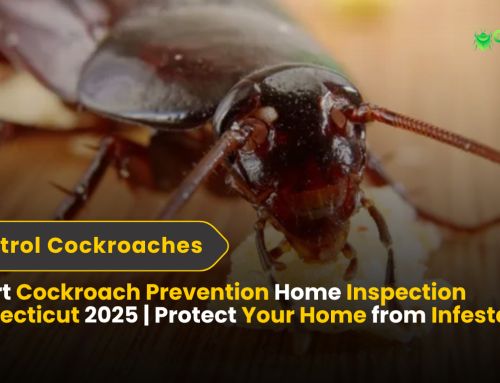How to Get Rid of Hornets Nest In 2025: Expert Tips and Effective Methods
Hornets can become a serious issue when they build nests near your property. These insects are highly territorial and can sting multiple times, causing pain and potential allergic reactions. This makes it essential to handle hornet infestations with caution and proper preparation.
Removing a hornet’s nest requires careful planning and the right tools. First, identify the nest location, typically found in trees, eaves, or hidden in shrubs. It’s best to approach nests at night when hornets are less active. Wear protective clothing to prevent stings, and use insecticide sprays designed for hornets. Spray directly into the nest’s entrance, following product instructions carefully.
For larger nests or nests in difficult-to-reach areas, it’s safer to call a professional pest control service. Professionals have the experience and tools to remove nests effectively and reduce the risk of harm.Prevent future infestations by sealing cracks in walls, keeping food sources secure, and trimming vegetation around your home. Regular inspections can help catch nests early.
Hornet control is crucial for safety and comfort, especially for those with allergies. If unsure, always prioritize safety and seek expert help. Addressing the issue promptly prevents bigger problems and ensures peace of mind.
Understanding The Basics Of Hornets and Their Nests Life
Hornets, a type of wasp, are generally larger and more aggressive than other wasps. Their nests are constructed using chewed wood fibers mixed with saliva, resulting in a paper-like structure. These nests can house hundreds of hornets and are often built in sheltered locations to protect the colony.
Common areas where hornets build their nests include:
- Trees and shrubs: Hornets often construct nests in dense foliage, providing both shelter and access to food sources.
- Under eaves or roofs: The overhangs of roofs and eaves provide protection from rain and predators.
- Inside attics or sheds: Enclosed spaces such as attics or outdoor sheds offer a secure environment for hornets to thrive.
- Underground cavities: Some species, like the European hornet, prefer nesting in burrows or underground spaces.
These locations allow hornets to remain hidden while maintaining proximity to food sources like insects and sugary substances. Their nests often start small but can expand significantly as the colony grows.
Why Are Hornets Dangerous To Human Environment?
Hornets are not only a nuisance but also a significant threat due to their aggressive behavior and painful stings. Here’s why they are considered dangerous:
1. Aggressive Defenders
Hornets are highly territorial and will attack in large numbers if they perceive a threat to their nest. Even unintentional disturbances can provoke them, making them particularly dangerous in residential areas.
2. Painful Stings
A hornet’s sting is more painful than that of bees or smaller wasps due to its larger size and potent venom. Unlike bees, hornets can sting multiple times, increasing the discomfort and potential for injury.
3. Health Risks
For most people, a hornet sting results in localized pain and swelling. However, multiple stings or stings to sensitive areas can lead to more severe reactions. In individuals with allergies, hornet stings can cause anaphylaxis, a life-threatening condition that requires immediate medical attention.
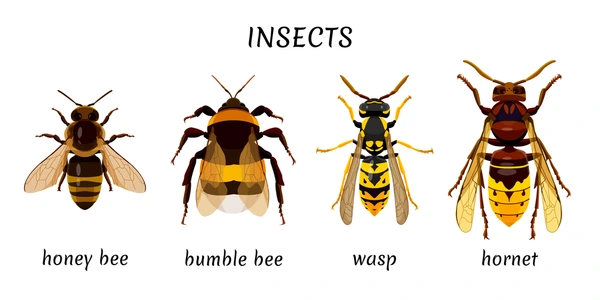
03 Main Solutions for Removing a Hornet’s Nest
1. DIY Approaches
Using Insecticidal Sprays:
- Purchase a hornet-specific insecticide spray from a hardware store.
- Wear protective clothing, including gloves, goggles, and long sleeves.
- Apply the spray at night when hornets are less active.
- Stand at a safe distance and ensure the spray reaches the nest entrance.
Soap and Water Solution:
- Mix two tablespoons of dish soap with water in a spray bottle.
- Spray the solution directly onto the nest and hornets.
- The soap clogs their breathing pores, killing them quickly.
Bagging and Disposal:
- Use a large, sturdy plastic bag to cover the nest.
- Detach the nest carefully and seal it inside the bag.
- Submerge the sealed bag in water to drown the hornets.
2. Natural Remedies
Essential Oils:
- Mix peppermint or clove oil with water and spray it around the nest.
- These oils act as natural repellents.
Vinegar Spray:
- Combine equal parts of vinegar and water.
- Spray it directly on the hornets and their nest.
Smoke Method:
- Light a fire in a metal bucket below the nest.
- The smoke drives hornets away, making it easier to remove the nest.
- Exercise caution to prevent fire hazards.
3. Calling Professional Exterminators
Professional pest control services are the safest and most reliable option for handling a hornet’s nest. Experts have the training, experience, and specialized tools to eliminate nests efficiently and minimize risks. Attempting to remove a nest without proper knowledge or equipment can lead to dangerous situations, especially given hornets’ aggressive behavior. Pest control professionals assess the situation, use appropriate methods to remove the nest, and provide guidance on preventing future infestations. Their expertise ensures the problem is resolved safely and effectively, giving you peace of mind while protecting your property and family from potential harm.
Effects of Different Solutions
Solution Effectiveness Safety Level Cost
|
|
|
|
|
|
|
|
|
|
|
|
|
|
|
|
Each method has its pros and cons. DIY approaches are cost-effective but come with risks, especially if the nest is large or hard to reach. Professional help is pricier but ensures the problem is resolved thoroughly and safely.
Professional Advice for Dealing with Hornets
Hornets can be dangerous, and dealing with them requires caution and preparation. Follow these tips to handle hornet infestations effectively:
- Avoid Provoking Hornets
Never try to remove a nest during the daytime when hornets are most active and aggressive. Disturbing their nest can provoke an attack, leading to multiple stings.
- Wear Protective Gear
If you must approach a nest, wear protective clothing that fully covers your body, including gloves, goggles, and a face shield. This reduces the risk of stings during removal.
- Inspect Your Property Regularly
Regular inspections, especially during spring and summer, can help detect nests in their early stages. Small nests are easier and safer to manage than fully developed ones.
Use Preventive Measures
- Seal Cracks and Crevices: Close gaps in walls, windows, and doors to prevent hornets from entering your home.
- Avoid Sugary Foods or Drinks Outdoors: Open food and beverages can attract hornets. Keep them covered to minimize the risk.
- Install Decoy Nests: Hornets are territorial and may avoid areas where other nests appear to exist.
Seek Professional Help for Large Nests
Large nests can be dangerous and overwhelming to remove on your own. Professional pest control services have the tools and expertise to handle the situation safely, ensuring the problem is resolved effectively.
FAQs About Hornet’s Nest Removal
Q1. Is it safe to remove a hornet’s nest on my own?
A: It can be safe for small nests if you follow proper precautions. However, for large nests, it’s best to hire professionals.
Q2. What time of day is best for removing a nest?
A: Nighttime is ideal because hornets are less active and more likely to be inside the nest.
Q3. How can I prevent hornets from building nests in the future?
A: Seal entry points, eliminate food sources, and use deterrents like essential oils or decoy nests.
Q4. Are natural remedies effective?
A: Natural remedies can work for small nests but may not be sufficient for large or well-established colonies.
Q5. How much does professional hornet removal cost?
A: Costs vary depending on the nest’s size and location, typically ranging from $100 to $300.
Final Thoughts
Removing a hornet’s nest requires careful planning and execution to ensure safety. While DIY methods can be effective for small nests, larger infestations or nests in hard-to-reach areas are best handled by professional exterminators. Hornets are territorial and can become highly aggressive when they feel their nest is threatened, so it’s essential to approach nest removal with caution.
If you choose to attempt removal yourself, always prioritize safety. Wear protective gear, including gloves, long sleeves, pants, and a face shield to minimize the risk of stings. Avoid approaching the nest during the daytime when hornets are most active. It’s also crucial not to provoke them by making sudden movements. If the nest is small and within reach, you can use an insecticide spray specifically designed for hornets to eliminate them.
Preventing future hornet infestations is equally important. Seal any cracks or gaps in your home’s exterior to block entry points. Keep food and sugary drinks inside and securely stored to avoid attracting hornets. Installing decoy nests in your yard can also deter hornets, as they are territorial and may avoid areas where other nests are present.
If you’re uncertain about the size or location of the nest, or if you feel uncomfortable handling the situation, always consult a professional. They have the tools, expertise, and experience to safely remove the nest and ensure your home remains hornet-free.

